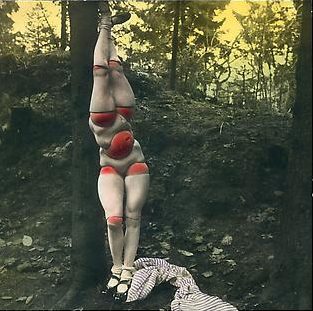The exhibition “German Vintage Photographs – from August Sander to Otto Steinert” covers a time frame of a half a century in the history of German photography. Beginning with the photographic achievements of the leading representatives of the New Vision movement in the Weimar Republic and extending to subjective photography and the fotoform group, independent, artistic and applied photography are featured in the exhibition.
Photography dating from the Weimar era is characterised by a great diversity in form and expression. During this period of Gleichzeitigkeit des Ungleichzeitigen (simultaneity and diversity), the possibilities of the photographic medium were investigated using a wide variety of approaches in terms of technique and formal composition. In the exhibition, these approaches range from the New Objectivity photographs by Albert Renger-Patzsch, portraits from August Sander’s monumental project “Man in the Twentieth Century” and nude photographs by Heinz Hajek-Halke, through to experimental and applied photographs by Bauhaus artists such as Laszlo Moholy-Nagy, Hannes Meyer, Walter Peterhans and Lotte Gerson.
The thirties and forties are represented by the surreal images of Hans Bellmer and Herbert List, portraits by Wols and Anneliese Kretschmer, nature photographs by Alfred Ehrhardt, Hein Gorny and Elfriede Stegemeyer as well as architectural and industrial photographs by Adolf Lazi and Werner Mantz.
The post-war photographers, particularly the members of the fotoform group on show in the exhibition, such as Otto Steinert, Peter Keetman and Ludwig Windstosser explicitly modelled themselves on their great precursors from the Weimar era. Nevertheless, their photographs, which primarily seek out the beauty of natural forms and their detailed textures, are devoid of anything utopic or playful in their application of the photographic medium. Their aim was to capture reality as it presents itself in images of the greatest possible formal severity and highest degree of technical perfection – even where experimental techniques were used. In the so-called subjective photography, “the conception, individual creativity, was the dominant feature” (Ute Eskildsen).
Erich Angenendt
Auriga Verlag
Theo Ballmer
Irene Bayer
Hans Bellmer
Aenne Biermann
Katt Both
Chargesheimer
Rudolf Dührkoop
Alfred Ehrhardt
Hugo Erfurth
Lotte Gerson
Hein Gorny
Walter Gropius
Arvid Gutschow
Heinz Hajek-Halke
Ruth Hallensleben
Raoul Hausmann
Heinrich Heidersberger
Jacob Hilsdorf
Lotte Jacobi
Peter Keetman
Edmund Kesting
Anneliese Kretschmer
August Kreyenkamp
Siegfried Lauterwasser
Adolf Lazi
Kurt Leppien
Herbert List
Werner Mantz
Hannes Meyer
Willi Moegle
Lucia Moholy
Laszlo Moholy-Nagy
Oskar Nerlinger
Walter Peterhans
Albert Renger-Patzsch
Franz Roh
August Sander
Toni Schneiders
Lotte Stam-Beese
Elfriede Stegemeyer
Otto Steinert
Liselotte Strelow
Marlene Tamm
Georg Trump
Ludwig Windstosser
Dr. Paul Wolff
Wols
Piet Zwart







